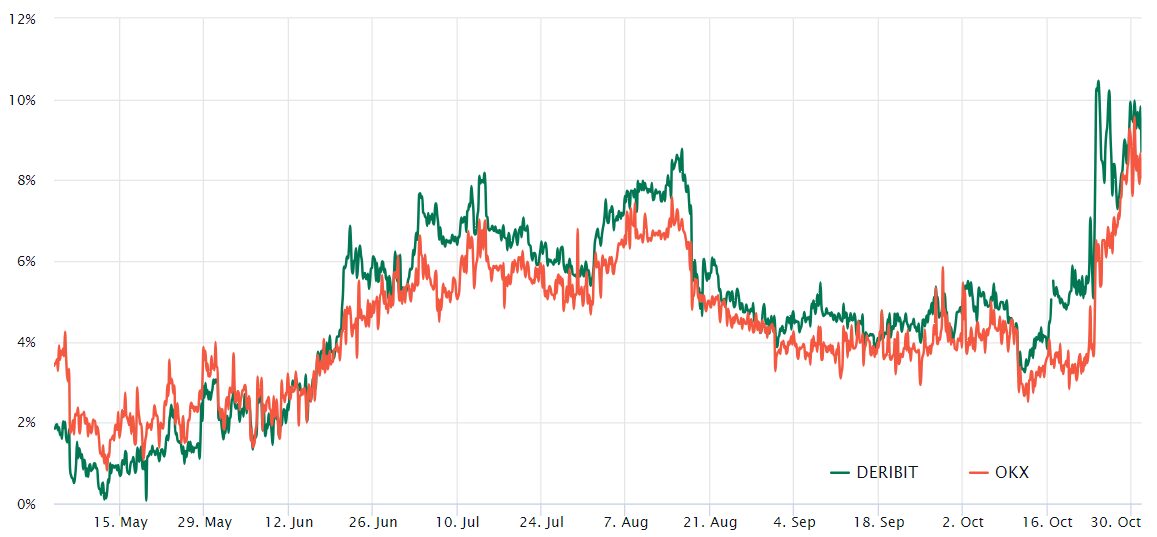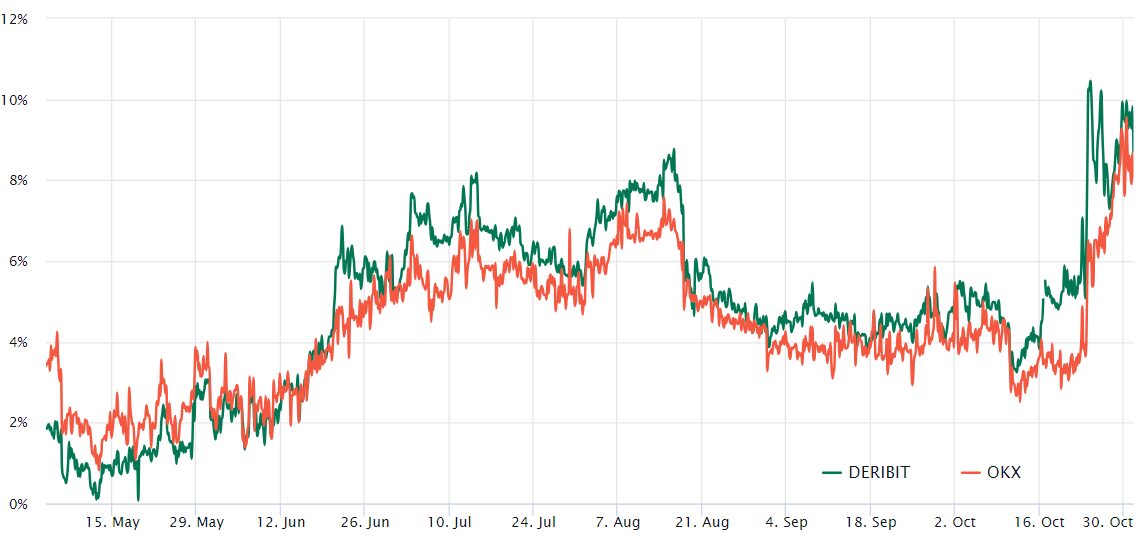Bitcoin (BTC) price surged by 26.5% in October and several indicators hit a one-year high, including the BTC futures premium and the Grayscale GBTC discount.
For this reason, it’s challenging to present a bearish thesis for BTC as data reflects the post-FTX-Alameda Research collapse recovery period and is also influenced by the recent increase in interest rates by the U.S. Federal Reserve.
Despite the positive indicators, Bitcoin price still remains around 50% below its all-time high of $69,900 which was hit in November 2021. In contrast, gold is trading just 4.3% below its $2,070 level from March 2022. This stark difference diminishes the significance of Bitcoin’s year-to-date gains of 108% and highlights the fact that Bitcoin’s adoption as an alternative hedge is still in its early stages.
Before deciding whether the improvement in Bitcoin futures premium, open interest and the GBTC fund premium signal a return to the norm, or the initial signs of institutional investors’ interest, it’s essential for investors to analyze the macroeconomic environment.
The U.S. budget issue sparks Bitcoin’s institutional hope
On Oct. 30, the U.S. Treasury announced plans to auction off $1.6 trillion of debt over the next six months. However, the key factor to watch is the size of the auction and the balance between shorter-term Treasury bills and longer-duration notes and bonds, according to CNBC.
Billionaire and Duquesne Capital founder Stanley Druckenmiller criticized Treasury Secretary Janet Yellen’s focus on shorter-term debt, calling it “the biggest blunder in the history of the Treasury.” This unprecedented increase in the debt rate by the world’s largest economy has led Druckenmiller to praise Bitcoin as an alternative store of value.
The surge in Bitcoin futures open interest, reaching its highest level since May 2022 at $15.6 billion, can be attributed to institutional demand driven by inflationary risks in the economy. Notably, the CME has become the second-largest trading venue for Bitcoin derivatives, with $3.5 billion notional of BTC futures.
Moreover, the Bitcoin futures premium, which measures the difference between 2-month contracts and the spot price, has reached its highest level in over a year. These fixed-month contracts typically trade at a slight premium to spot markets, indicating that sellers are requesting more money to delay settlement.

The demand for leveraged BTC long positions has…
Click Here to Read the Full Original Article at Cointelegraph.com News…
























